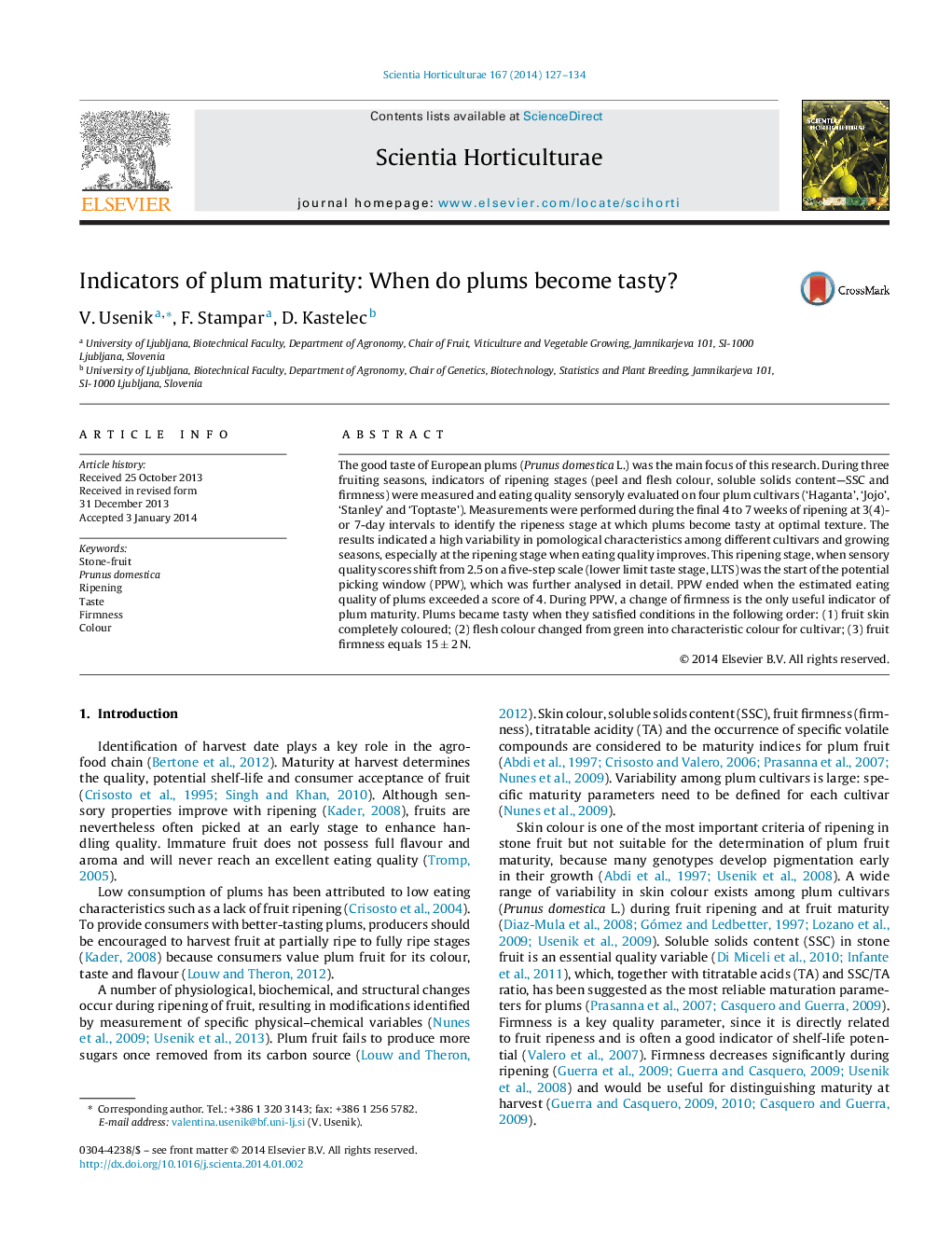| کد مقاله | کد نشریه | سال انتشار | مقاله انگلیسی | نسخه تمام متن |
|---|---|---|---|---|
| 4567018 | 1628831 | 2014 | 8 صفحه PDF | دانلود رایگان |
• The final stages of plum (Prunus domestica L.) ripening were monitored over three growing seasons.
• The results indicate high variability in pomological characteristics among different cultivars and growing seasons.
• Plum became tasty after the skin was completely coloured and the flesh colour changed from green to the colour, characteristic for the cultivar.
• Firmness is the only useful indicator of maturity during the final stage of plum ripening.
The good taste of European plums (Prunus domestica L.) was the main focus of this research. During three fruiting seasons, indicators of ripening stages (peel and flesh colour, soluble solids content—SSC and firmness) were measured and eating quality sensoryly evaluated on four plum cultivars (‘Haganta’, ‘Jojo’, ‘Stanley’ and ‘Toptaste’). Measurements were performed during the final 4 to 7 weeks of ripening at 3(4)- or 7-day intervals to identify the ripeness stage at which plums become tasty at optimal texture. The results indicated a high variability in pomological characteristics among different cultivars and growing seasons, especially at the ripening stage when eating quality improves. This ripening stage, when sensory quality scores shift from 2.5 on a five-step scale (lower limit taste stage, LLTS) was the start of the potential picking window (PPW), which was further analysed in detail. PPW ended when the estimated eating quality of plums exceeded a score of 4. During PPW, a change of firmness is the only useful indicator of plum maturity. Plums became tasty when they satisfied conditions in the following order: (1) fruit skin completely coloured; (2) flesh colour changed from green into characteristic colour for cultivar; (3) fruit firmness equals 15 ± 2 N.
Journal: Scientia Horticulturae - Volume 167, 6 March 2014, Pages 127–134
